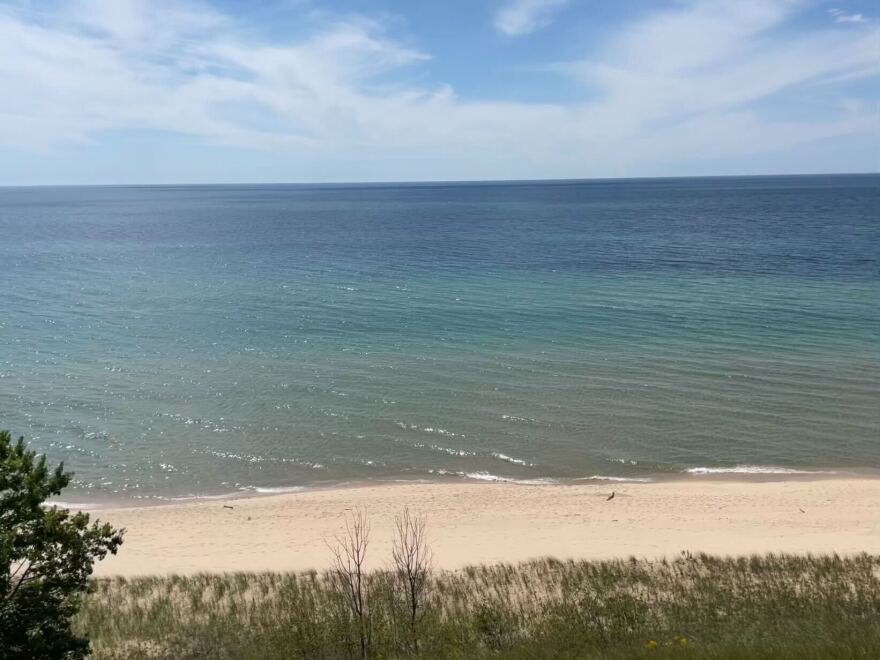Over the past decade, the Great Lakes have seen some of the most dramatically variable water levels. In 2013, Lake Michigan and Lake Huron saw an all-time low. Within the next seven years, all five lakes set record highs. Lake Ontario even did it twice, setting a record-high lake level in 2017, and then breaking that record in 2019.
Lake water levels affect millions of people in the Great Lakes region, from the folks who live on its shores, to vacationers who recreate there, to those who rely on the lakes as a source of drinking water.
On today’s Stateside podcast, Drew Gronewold, an associate professor at the University of Michigan's School for Environment and Sustainability, discussed what the changes in lake levels mean.
Are lake water levels drastically different than they have been in the past?
Gronewold explained that lake level fluctuation itself is nothing new. It’s normal for large-scale evaporation and precipitation changes to remove from and add water to the lakes. What is new is the amount of variability in that evaporation.
“In the late 1990s, evaporation, particularly on Lake Superior and Lake Michigan, Lake Huron sort of went through the roof,” Gronewold said. “Evaporation went up and the Great Lakes went down. But in around 2013 and 2014, evaporation slowed down a lot at the same time the precipitation was going up. Those types of swings in evaporation, coupled with this continued increase in precipitation, is something that we just don't see much of in the long term historical record.”
Is there a way to determine the cause of variability in lake levels?
In order to see variability, hydrologists study the complicated relationship between ocean circulation and atmospheric circulation dynamics. Research suggests that the increase in precipitation in the Great Lakes region from 2013 until 2020 might have been connected with “atmospheric blocking.” Storm tracks from the southern Atlantic and the Gulf of Mexico typically make their way over the east coast. Atmospheric blocking caused them to instead go directly over the Great Lakes.
“Ultimately, it might be due to these global climate change signals and changes in atmospheric and ocean circulation dynamics,” Gronewold said.
Are the Great Lakes healthy?
There are many areas of the Great Lakes that have extraordinary health, Gronewold said, but it's hard to avoid the impacts of humans in one way or another, whether it be through increased pollutants or detrimental attempts to control the variability of water levels.
“Lake Superior is an extraordinary global resource in terms of the quality of the water,” Gronewold said. “But as you move downstream, you know, there isn't a lake that really has in some way been affected by invasive species or the introduction of nutrients in some unusual way that has affected its overall health.”
What role might the Great Lakes play nationally in the future?
The Great Lakes have an abundance of freshwater, which can be a major draw for people looking to escape drier climates. However, this could lead to potential conflict.
“That gets complicated, because we'd have to consider the economic consequences of people moving to the basin and whether there are enough jobs to support an influx of people.” Gronewold said.
Other areas in the country are experiencing dramatic differences in their water levels when compared to years past. Colorado River water levels are decreasing, and sea levels are increasing on the marine coasts. However, the long term average water level in the Great Lakes is not expected to be dramatically different than it has been in the past.
“There's likely to be a growing gradient between water scarcity in some parts of this country, in the world, and water abundance,” Gronewold said. “Over the next five, 10, and 20 years, the Great Lakes (region) as a whole is going to have to revisit what role they want to play in either the utilization or the sharing of that water.”









